The screen does not turn off during a conversation
Constantly active backlighting during a call leads to many related problems: the battery begins to discharge quickly, extraneous buttons are pressed, and during a call there is no way to hang up the call in time.
When the screen does not turn off IPhone conversation, you should immediately determine the cause of the breakdown and eliminate it, otherwise the phone may heat up excessively.
Causes of the problem
The type of repair (hardware or software) depends on the cause of the backlight problem. Let’s take a closer look at why the iPhone screen doesn’t go dark during a conversation. The following cases are identified that could cause a breakdown:
- Phone falling. Even if the phone was dropped only once and no visible damage is visible, this does not mean that they did not appear inside the case. Also, any deformation of the case can cause a malfunction of the physical parts of the device;
- A protective screen or film causes unstable operation of the sensor. All these additional screens are made from different materials and some of them may interfere with the sensor's ability to detect movement. Remove the film or case and wipe the proximity sensor with a dry, clean cloth to improve its functionality. In the future, purchase case protectors made of higher quality and thinner materials;
- Poor quality repairs. You may have recently changed your camera or body. As a result of unprofessional actions of the technician, the light filter could be damaged or the replaced part could be a fake;
- Getting inside the phone large quantity moisture and the formation of condensation on parts. In this case, you should dry the iPhone, leaving it unassembled for a day.
Reset
In practice, there are cases when the locked screen on an iPhone does not go dark after an SMS or system notification arrives. In this case, you should simply reset your phone to factory settings. After rebooting, the device will work normally. To avoid losing user data, create backup copy in iTunes or iCloud.
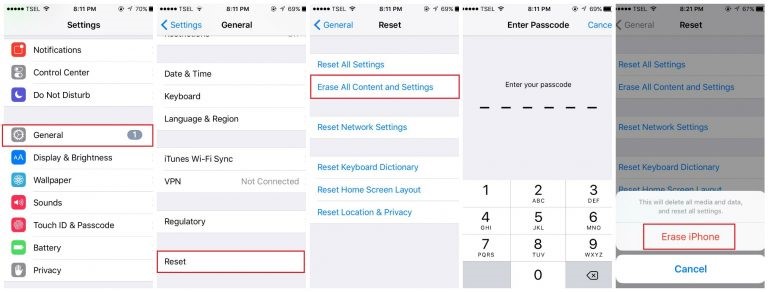
Replacing the proximity sensor
The proximity sensor is a component built into the iPhone that allows you to automatically detect the user's proximity to the device during a call. When you bring the phone to your ear, the sensor automatically detects this action and the backlight turns off to prevent other keys from being pressed. A broken sensor may not recognize movements at all or detect them only once.
If software methods the solutions did not help you solve the problem, you should replace the sensor with a new part. Please note that the original proximity sensor must have a special UV filter (its presence is indicated by a light pink coating on the sensor). Please pay attention to this feature when purchasing original components:

The location of the proximity sensor is shown in the figure below:
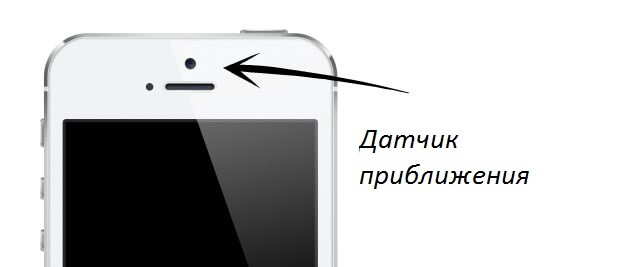
The sensor cannot be purchased separately. If the iPhone screen does not go off when talking, you should replace it front camera. Its hardware configuration includes a proximity sensor.
The repair is that you need to detach the display module from the back of the case. Then you should unscrew the front camera plug:
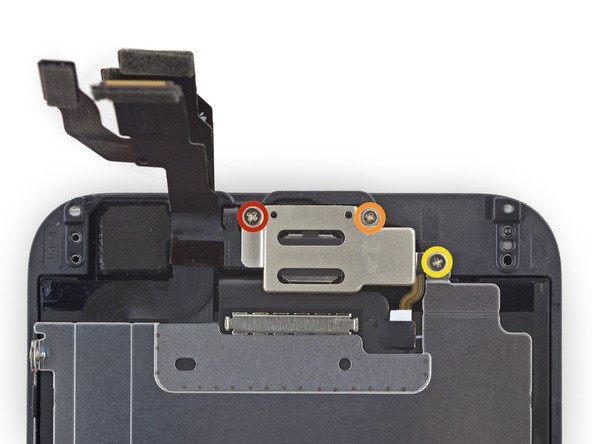
Perhaps dust or dirt simply got into the sensor, so its operation was malfunctioning. If this is the case, you should clean the part using a dry cotton swab. If there is no contamination and the sensor does not work, continue the repair.
The next step is to disconnect the camera using a spudger and tweezers and replace it with a new part. This way you will get an updated motion sensor.

Introduction:
This series of smartphones has such a problem: when making an outgoing call, the screen goes blank, while it is blocked and until the “wrong end” hangs up, it is impossible to do anything with the phone, except to turn it off by long pressing the button.
It looks like this:
Equipment:
So, the suspected reason: a problem with the proximity sensor. Why is it needed: we dial a number, then we put the phone against our ear to talk, the sensor detects a change in the responsibility in front of us - the ear closes (changes the intensity) of the light stream and gives a signal to lock the screen. Why lock your smartphone screen - so as not to press too much. Smartphones, unlike telephones, allow you to, for example, dial a dictated number or write an SMS during a conversation.
First you need to check Is this sensor alive at all? ? To do this, open Diagnostics using the combination ##634#, then ALS - when closing the sensor, the readings should change. If they don't change, then do it full reset and check again. If the readings do not change, then either the sensor is blocked by something - for example, an inappropriate protective film or broken.
In our case, the sensor is alive, the values in the test change, when the light is completely blocked (your finger tightly on the glass is “0”. This means the problem is in the mounting frame.
The point is simple: the sensor is very critical to its location relative to the glass and when the frame is not tight, the sensor is at a distance from the glass, “just in case” it always blocks the screen during a call, even if the phone is not brought to the ear (you can see it in the video).
Repair:
For repairs we will need the following:
repair kit

glue closer
I won’t write how to disassemble a smart phone - it’s been described many times, example video:
We need to slightly disassemble the phone, not completely: remove the screen with frame and sensors, disconnecting it from the motherboard. fees.

smartphone is disassembled
Having removed it, we see that the frame has come off (comes unstuck)
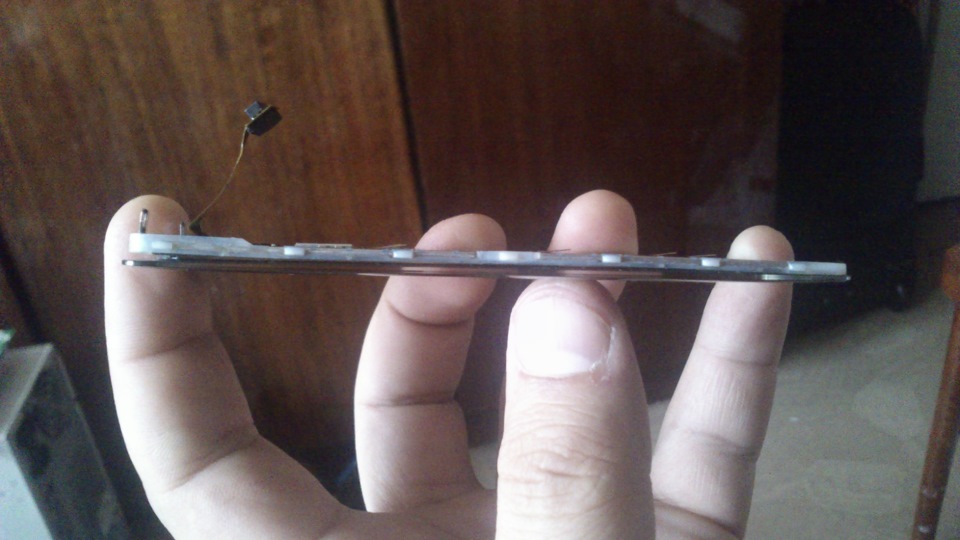
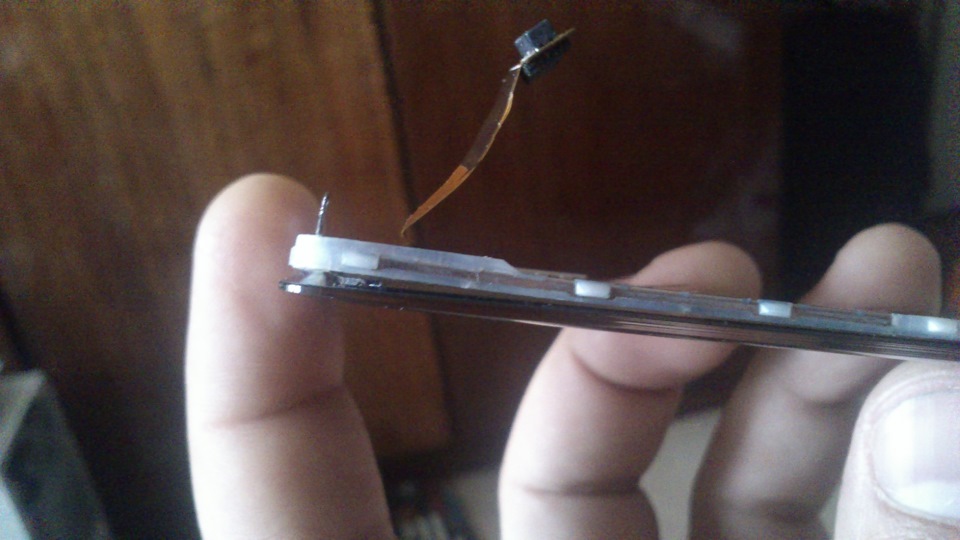
I wonder why they generally glue the glass to the frame?.. So that they don’t glue the fact that it has come off. (That was a rhetorical digression :))
Careful!
We unfasten the cable and remove the sensor from the frame, we see a window through which he “looks” to see if his ear is attached :)
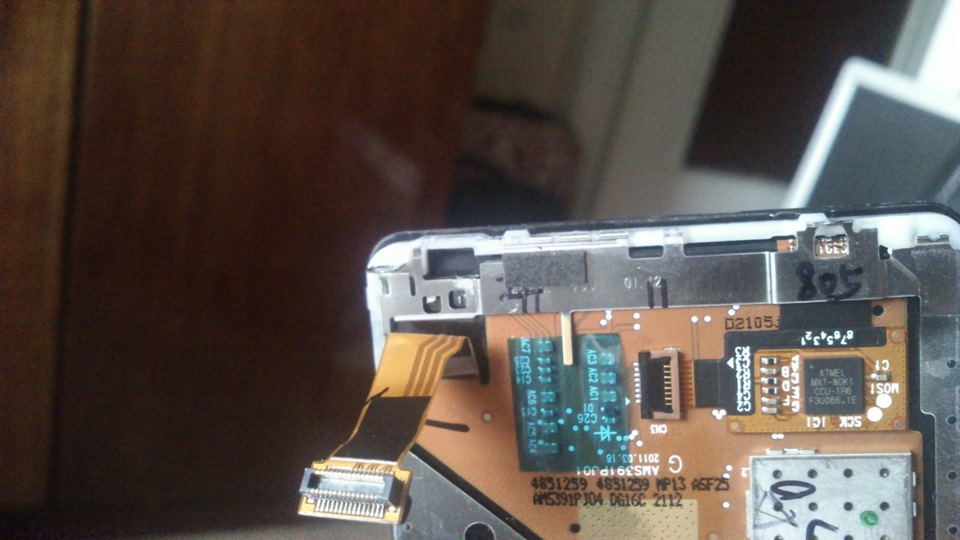
sensor location and window
Well, from the front side you can see where it is located: on the right top corner screen.

sensor window

A glowing cheek during a conversation is, of course, cool! However, this is not very good in terms of wasting battery power.
Sometimes it happens that when making a call, the user puts the phone to his ear, and the smartphone display continues to glow. This clearly indicates incorrect operation proximity sensor.
You've probably seen small holes on the top of the phone, right above the display, not far from the earpiece. And, most often, there are two of them. These are proximity and light sensors. The first is responsible for turning off the display backlight during a call, and the second is used to adjust the display brightness depending on the ambient light.
In our case, the screen Samsung smartphone Galaxy Ace 2

did not stop glowing while being pressed closely to the user’s ear. Moreover, according to the owner, nothing special happened to the phone. As usual: he worked, worked, and stopped.
And what do you think the disassembly and detailed inspection showed? Oxides were detected on the proximity sensor cable connection connector, that is, several contacts were short-circuited


This connector has been cleaned

After cleaning the connector, the normal operation of the proximity sensor and the phone as a whole was restored. It would seem that the phone did not get wet or fall into the water. However, as they say, water will always find its place. Sometimes it is enough to put the phone in a damp room, for example, in the bathroom, and the result will not take long to arrive.
That's all! Take care of yourself and your phones!!!
Good luck with your repairs!!!
